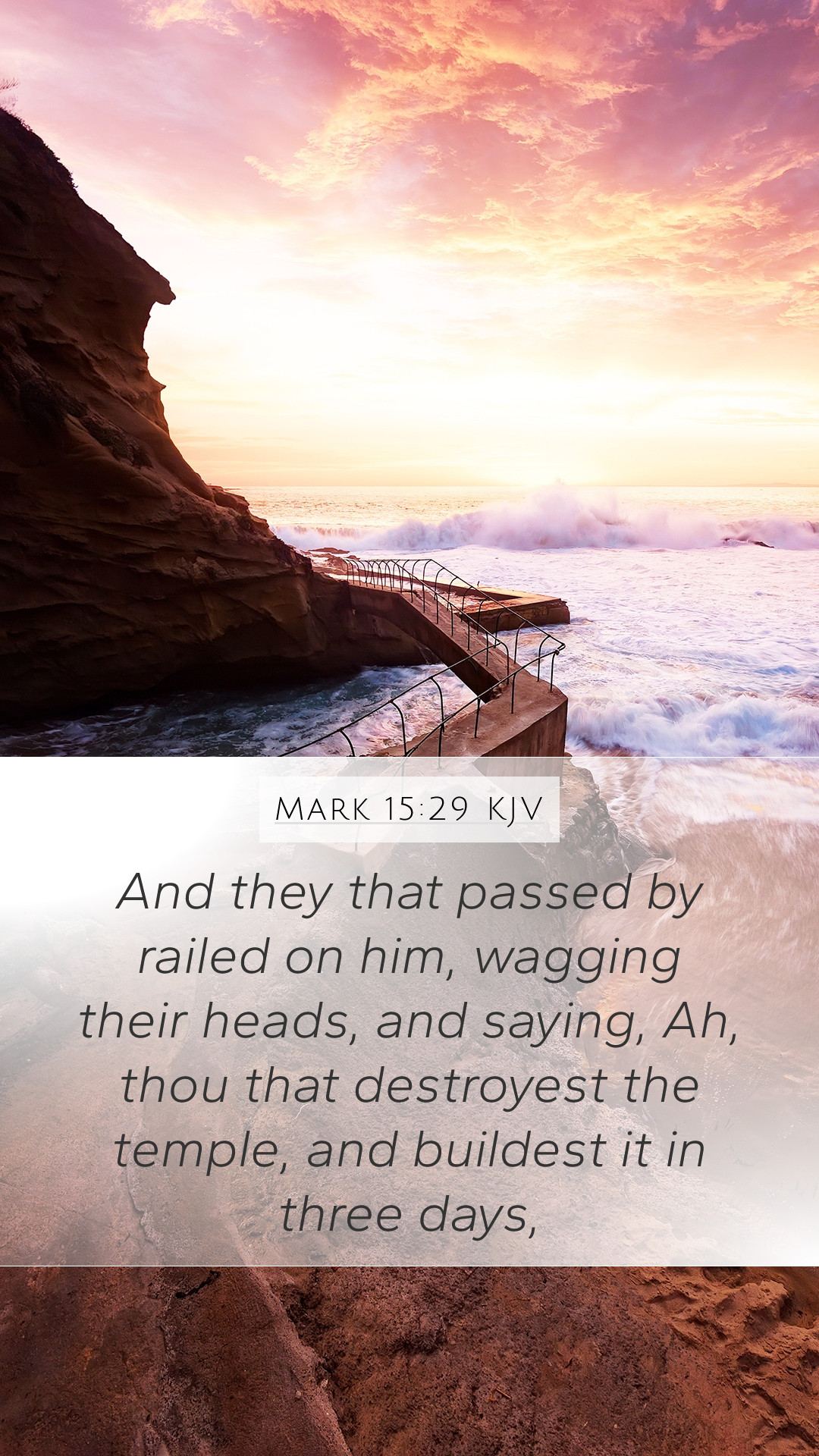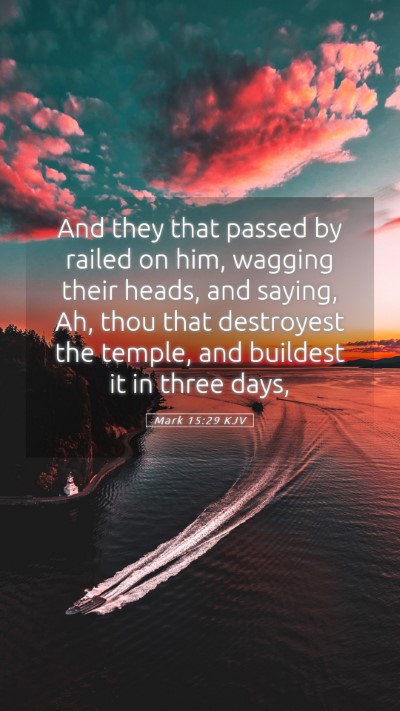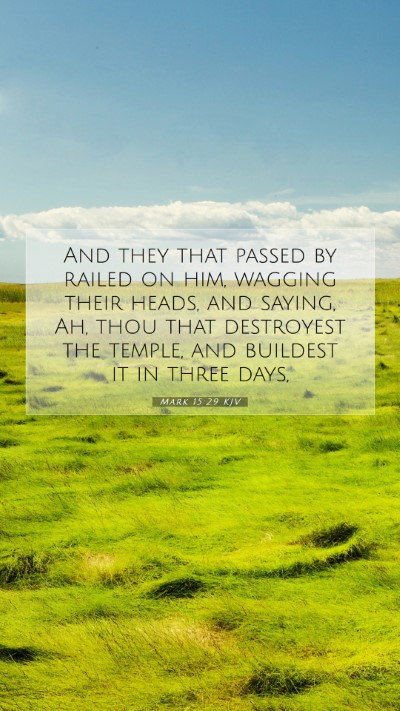Understanding Mark 15:29 - Bible Verse Commentary
Mark 15:29 presents a pivotal moment during the crucifixion of Jesus Christ, encapsulating the mockery he faced from the onlookers. This verse reads:
"And they that passed by railed on him, wagging their heads, and saying, Ah, thou that destroyest the temple, and buildest it in three days,"
Primary Insights and Meaning of Bible Verse
This passage evokes a deep exploration of the themes of ridicule, prophecy, and the contrasting perspectives on Jesus's mission. Here's a synthesis of various public domain commentaries on this verse:
-
Matthew Henry Commentary:
Henry notes that the crowd's mockery illustrates human disdain for divine truth. The act of wagging their heads symbolizes contempt, while their references to Jesus’ predictions about the temple reflect both misunderstanding and the fulfillment of prophecy.
-
Albert Barnes Commentary:
Barnes elaborates on the insult directed towards Jesus. He indicates that the accusation of claiming to destroy the temple highlights the irony; the very people mocking Him fail to realize that their hostility plays into God's redemptive plan.
-
Adam Clarke Commentary:
Clarke's analysis brings attention to the duality of Jesus as both a figure of scorn and the cornerstone of the faith. He stresses that the destruction referenced was symbolic of spiritual renewal rather than physical destruction, capturing the essence of Jesus’ mission.
Detailed Analysis and Exegesis
The context surrounding Mark 15:29 allows for a richer understanding of Jesus’ role and the societal perceptions of Him during His earthly ministry. Here are key points derived from a careful analysis:
-
Historical Context:
The mention of the temple connects to Jewish tradition and expectations. In the minds of the Jewish leaders, Jesus' assertion posed a threat to their authority and the sanctity of the temple, leading to His condemnation.
-
Symbolism of the Temple:
The temple in this passage symbolizes God's presence among His people. Jesus' comments about its destruction pointed towards the new covenant He was establishing, where true worship would occur through Him, rather than a physical structure.
-
Cultural Reaction:
The derision faced by Jesus from the crowd reflects a common human reaction to perceived failure or misunderstanding of a leader's true purpose, especially in times of crisis. This bird’s eye view into the complex dynamics of faith showcases how easily people can turn against what they do not comprehend.
Application in Daily Life
Mark 15:29 not only serves as a historical account but imparts lessons for modern readers. Here’s how one might apply the insights from this verse:
- Recognize that faith can often be at odds with societal expectations, much like Jesus faced rejection.
- Understand that true worship transcends physical places; it resides in the heart and community of believers.
- Embrace humility in times of misunderstanding or misjudgment, knowing that Jesus faced similar challenges.
Related Cross References
For further study and comparative analysis, consider the following related scriptures:
- Matthew 27:39-40 - Parallel account of mockery at the crucifixion.
- John 2:19-21 - Jesus predicts the destruction of the temple and His resurrection.
- Psalm 22:7-8 - Prophetic Psalm foreshadowing the mocking of Christ.
Conclusion
The verse Mark 15:29 encapsulates a profound moment of derision during Jesus’ crucifixion, rich with implications for understanding His mission and the nature of faith amidst skepticism. Such insights guide us toward a deeper appreciation of Scripture, enhancing our Bible study endeavors.
For those engaged in bible study groups, this commentary serves as a valuable resource to facilitate discussion and reflection. By utilizing bible study tools and bible study guides, we can deepen our understanding of Scripture and apply the lessons of this passage to our lives.


